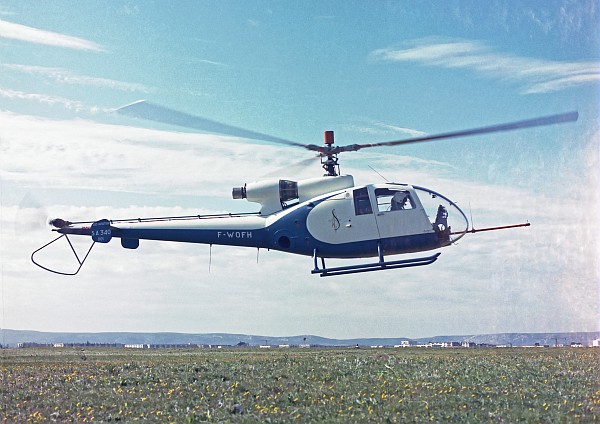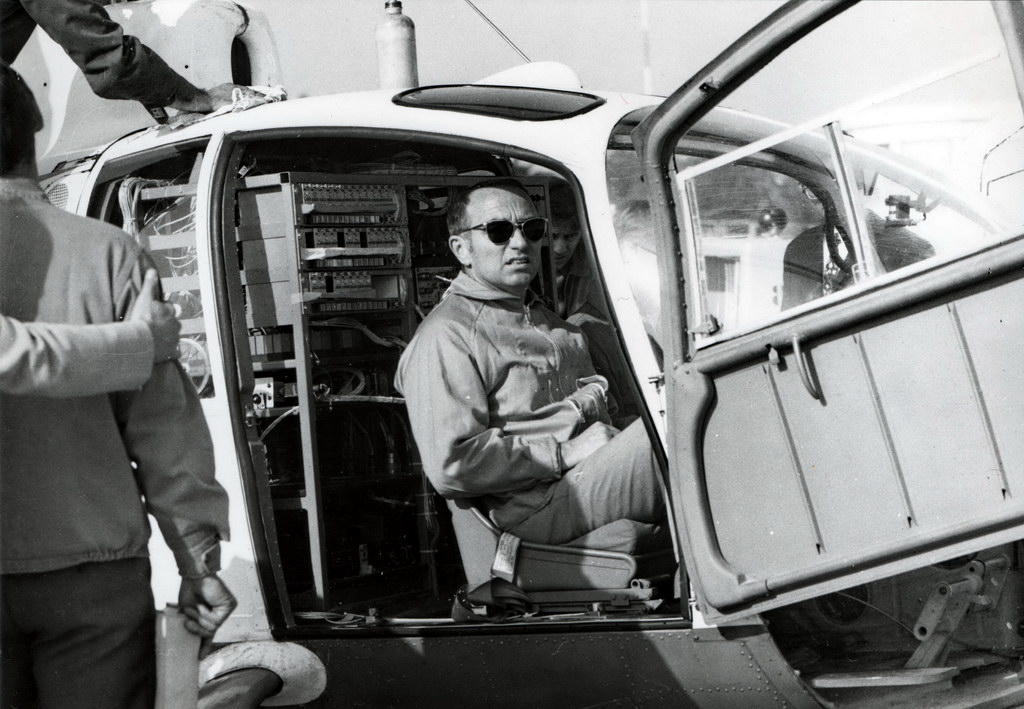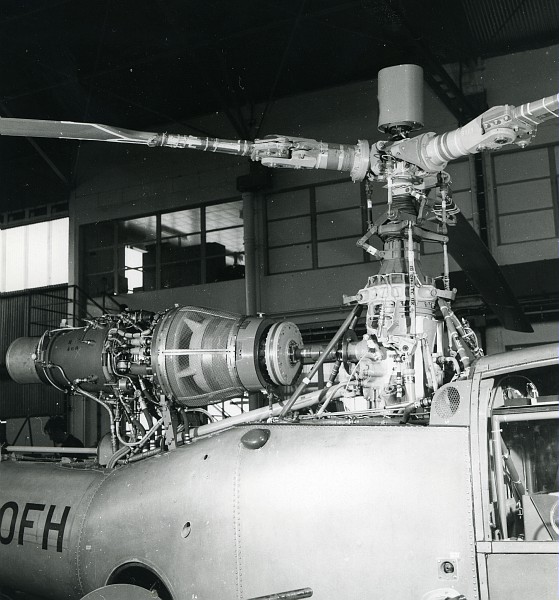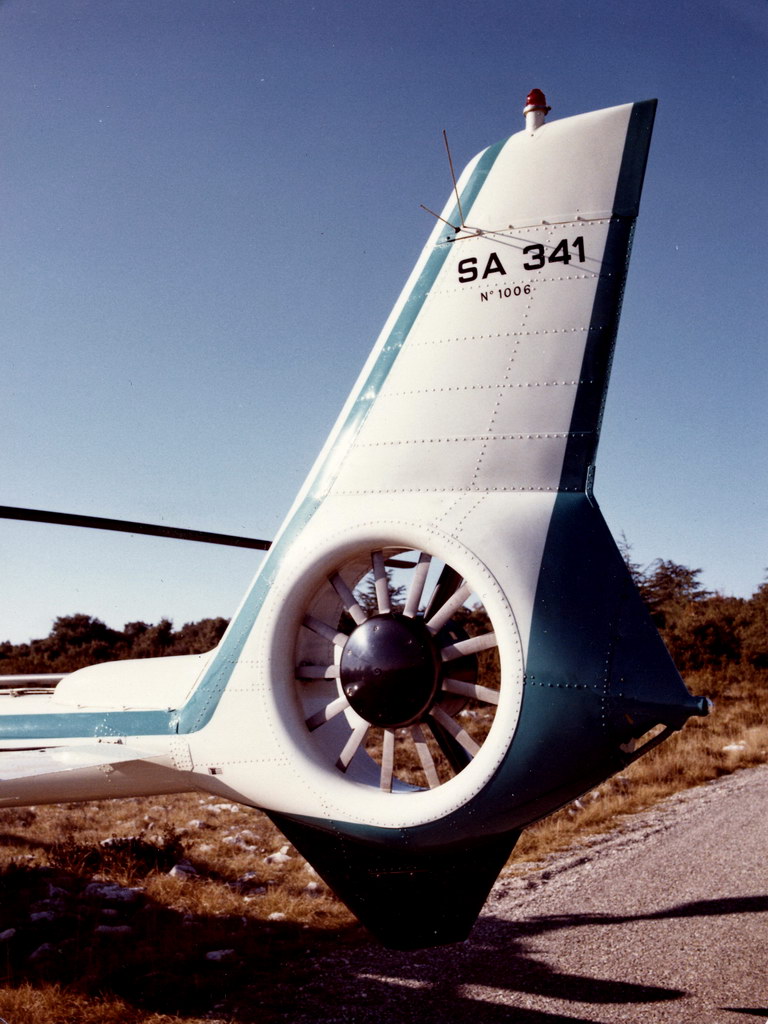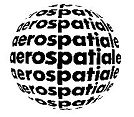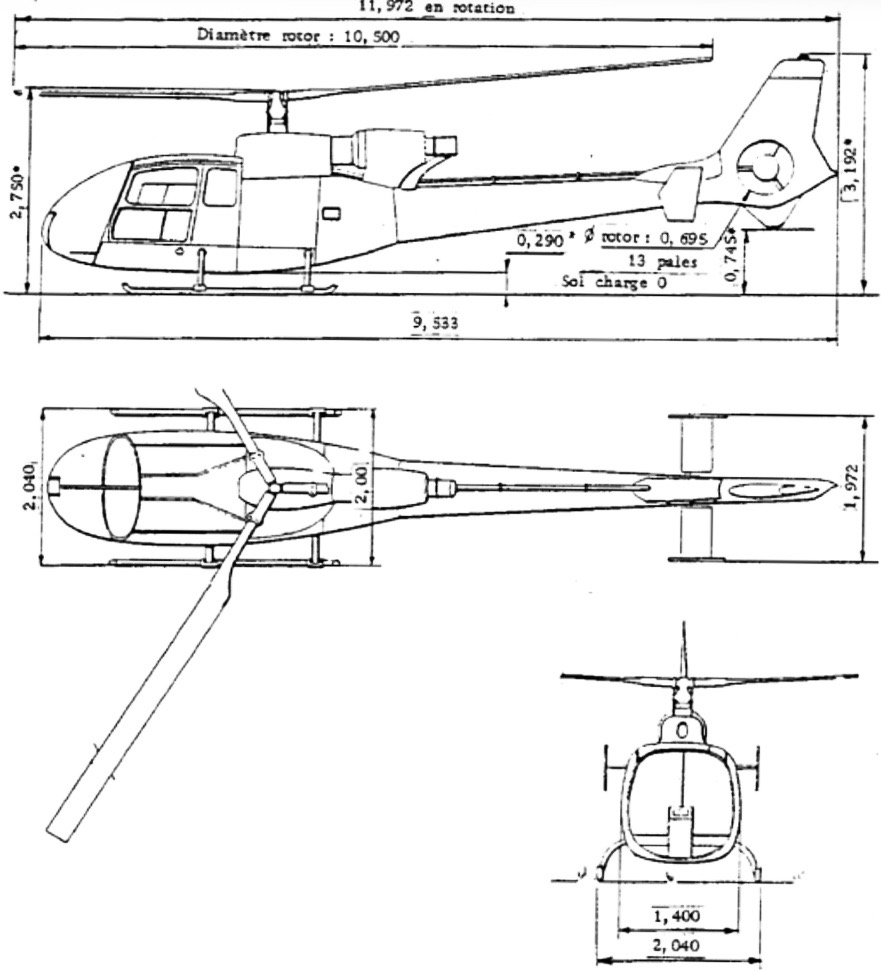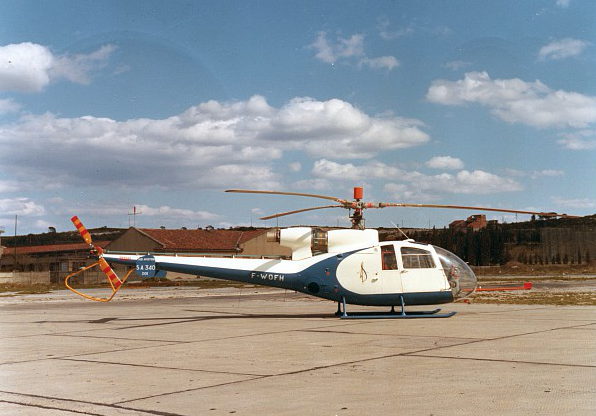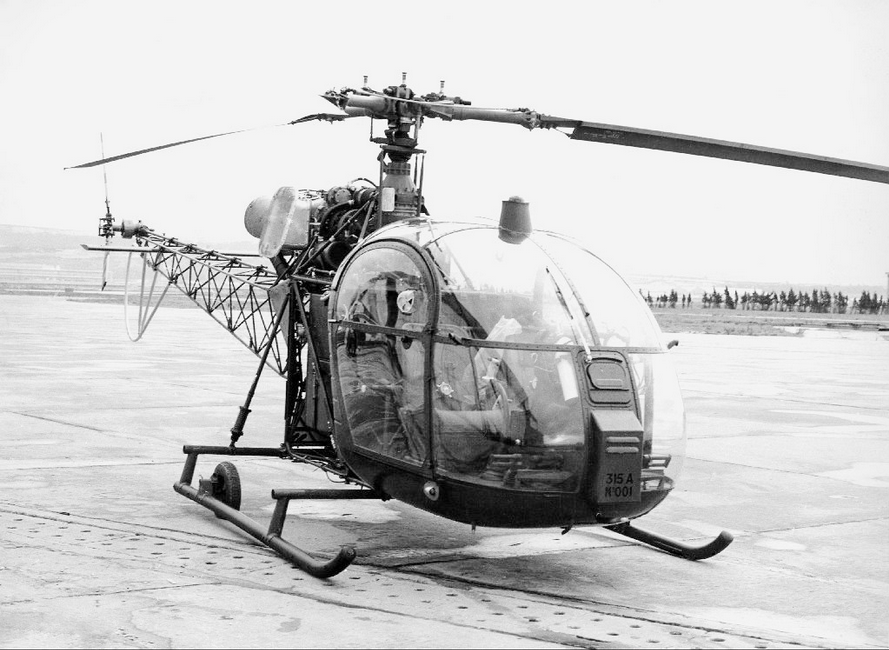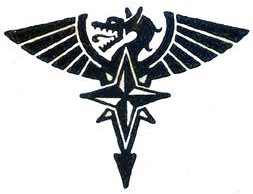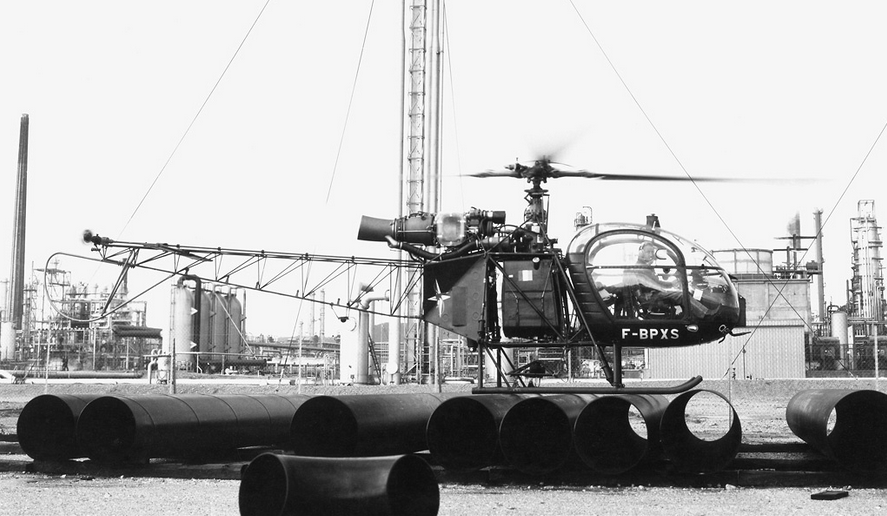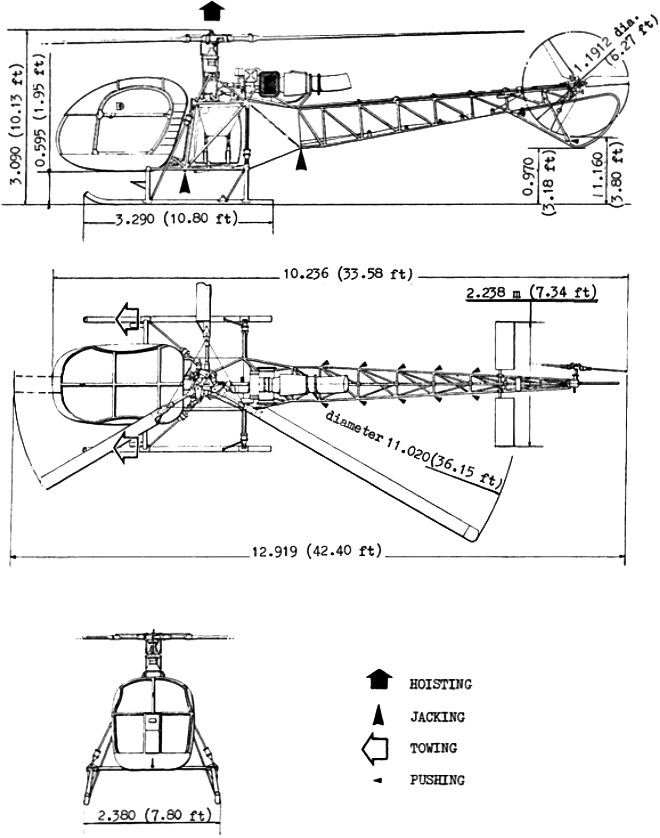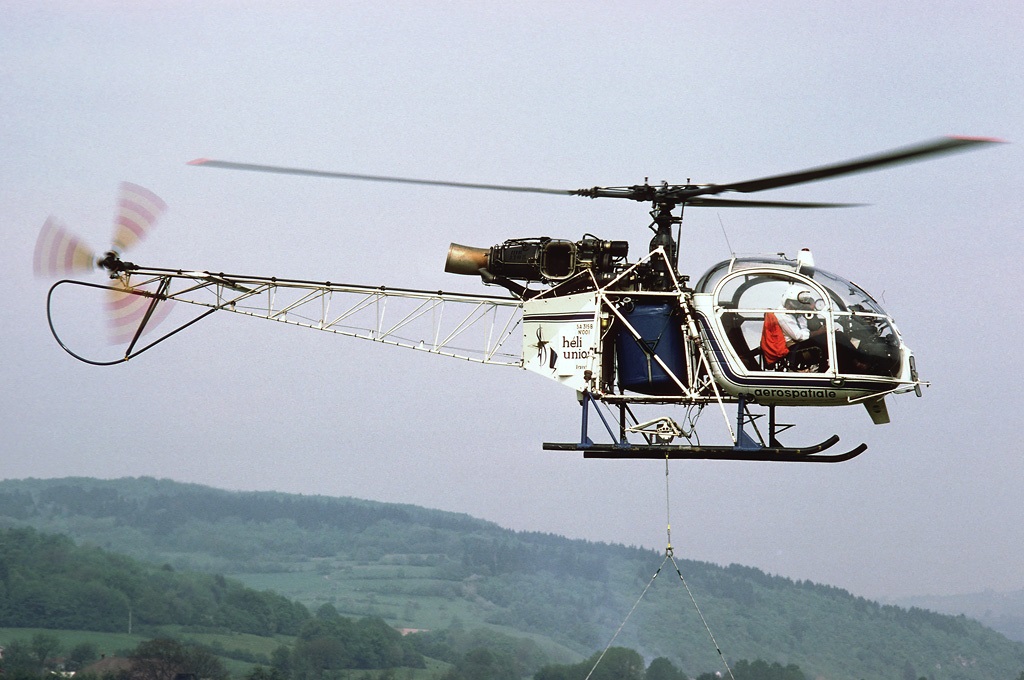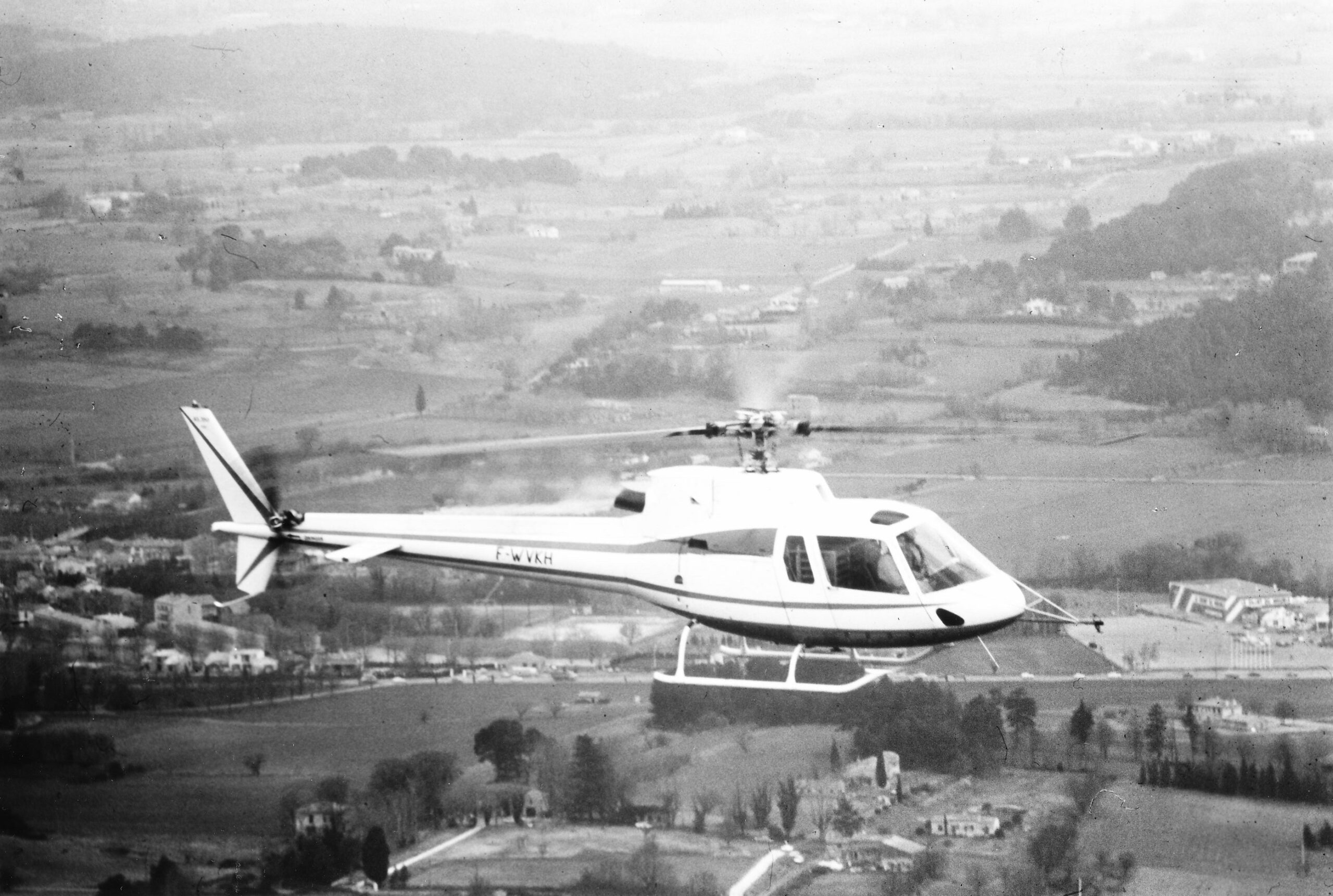
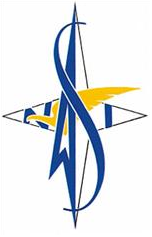
The AS 350 C, Nº. 001, was powered by a Lycoming LTS101-600A-1 turboshaft engine rated at 592 shaft horsepower. A second prototype, AS 350 B, F-WTNB, powered by a Turboméca Arriel engine, flew for the first time 14 February 1975.
Initially known internally as the “Business Allouette” after another SNIAS helicopter, the company eventually named the new helicopter Écureuil, which means “squirrel” in English. The name was announced publicly 9 March 1976. Helicopters for the North American market were called the “A-Star.”
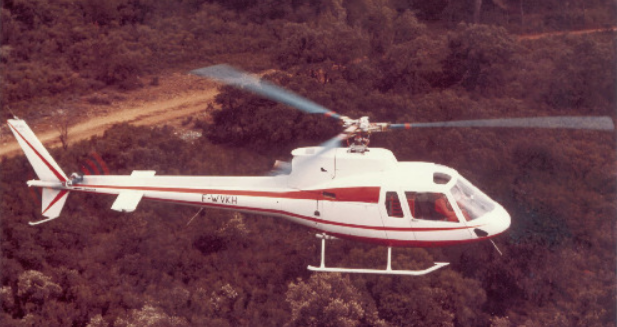
The Aérospatiale AS 350 Écureuil is a 6–7 place, single-engine light helicopter, operated by a crew of one or two pilots. Introduced by Aérospatiale in 1978, it remains in production today and is one of the most popular civil helicopters, with more than 5,000 built. The manufacturer is now known as Airbus Helicopters. The current model is the Airbus H125 (previously named the Eurocopter AS 350 B3e)
The Lycoming LTS101-600A engine that powered the AS 350 C prototype and U.S.-production A-Stars is a turboshaft engine with a single stage axial-flow, single stage centrifugal-flow compressor section, and annular combustor, a single stage gas generator turbine and single stage free power turbine. The gas generator section (N1) turned 49,638 r.p.m, 5-minute limit for takeoff, and the power turbine (N2), 6,085 r.p.m. The -600A-2 is 0.786 meters (2 feet, 6.95 inches) long, 0.492 meters (1 foot, 7.37 inches) wide and 0.600 meters (1 foot, 11.62 inches)high. It weighs 115 kilograms (253.5 pounds).
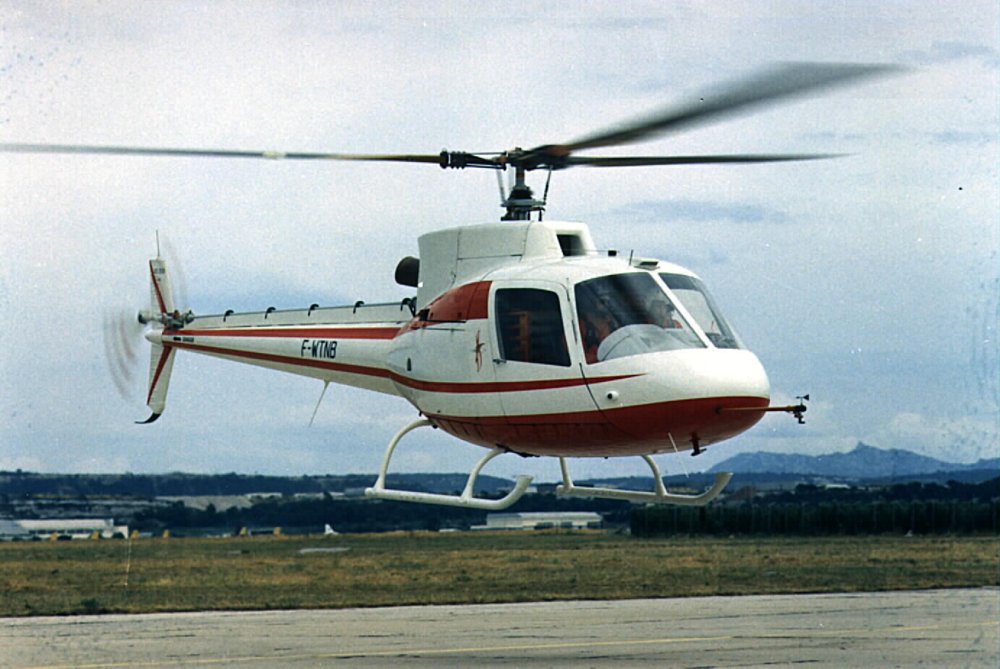
The AS 350 B3 is a high-performance variant, specially configured for high density altitude operations (“hot and high”). The overall length with rotors turning is 12.94 meters (42 feet, 5.4 inches). The fuselage is 10.93 meters (35 feet, 10.3 inches) long and the cabin is 1.87 meters (6 feet, 1.6 inches) wide. The helicopter’s overall height is 3.14 meters (10 feet, 3.6 inches).
In keeping with standard French practice, the Écureuil/A-Star’s main rotor system turns clockwise as seen from above. (The advancing blade is on the helicopter’s left side.) The composite hingeless three-blade rotor has a diameter of 10.69 meters (35 feet, 0.9 inch). The normal operating range is 385–394 r.p.m. (320–430 r.p.m. in autorotation). A two-bladed tail rotor is mounted on the right side of the tail boom in a pusher configuration. It rotates clockwise, as seen from the helicopter’s left. (The advancing blade is below the axis of rotation.) Its diameter is 1.86 meters (6 feet, 1.2 inches.)
The AS 350 B3 has an empty weight of approximately 1,174 kilograms (2,588 pounds), depending on installed equipment, and maximum gross weight of 2,250 kilograms (4,961 pounds).
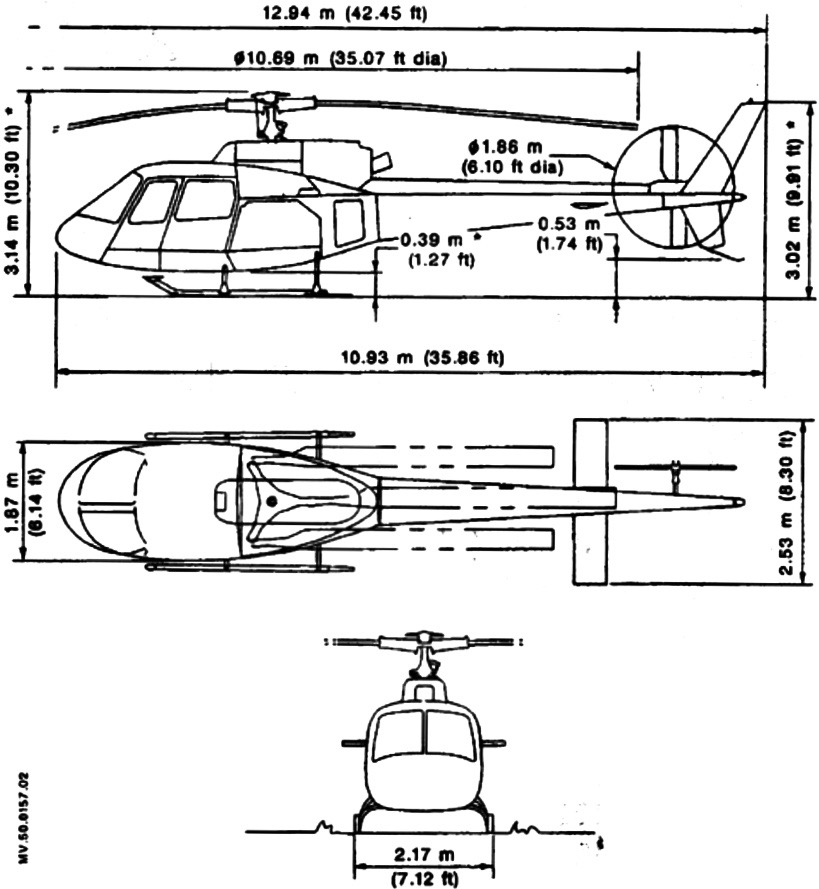
The AS 350 B3 variant is powered by a single Turboméca Arriel 2B turboshaft engine. The Arriel 2B is a free turbine turboshaft engine which uses an electronic engine control system (EECU). The engine has a two-stage compressor section (single-stage low-pressure axial flow, single-stage high-pressure centrifugal flow); an annular combustion chamber; and two-stage turbine section (single-stage gas generator and single-stage power turbine). The compressor section turns 52,110 r.p.m. at 100% N1; The power turbine, N2, turns 39,095 r.p.m. at 100%. A gear reduction unit reduces the engine’s output shaft speed to 5,990 r.p.m.
The Arriel 2B produces 847 shaft horsepower, but is de-rated to the helicopter’s main transmission limit. Installed, the Arriel 2B is rated at 536 horsepower for cruise; 700 horsepower, Maximum Continuous Power; and 733 horsepower for take off (5 minute limit).
The Arriel 2B is 118.0 centimeters (3 feet, 10.46 inches) long, 50.0 cm (1 foot, 6.69 inches) wide, 62.0 cm (2 feet, 0.41 inches) high. It weighs 134 kilograms (295.4 pounds), dry. The Arriel series engines are now produced by Safran Helicopter Engines.
The AS 350 B3 has a cruise speed of 132 knots (152 miles per hour/245 kilometers per hour) and maximum speed of 155 knots (178 miles per hour/287 kilometers per hour). It carries over four hours of fuel and has a maximum range of 357 nautical miles (411 statute miles/662 kilometers). The maximum allowable altitude is 7,010 meters (23,000 feet).
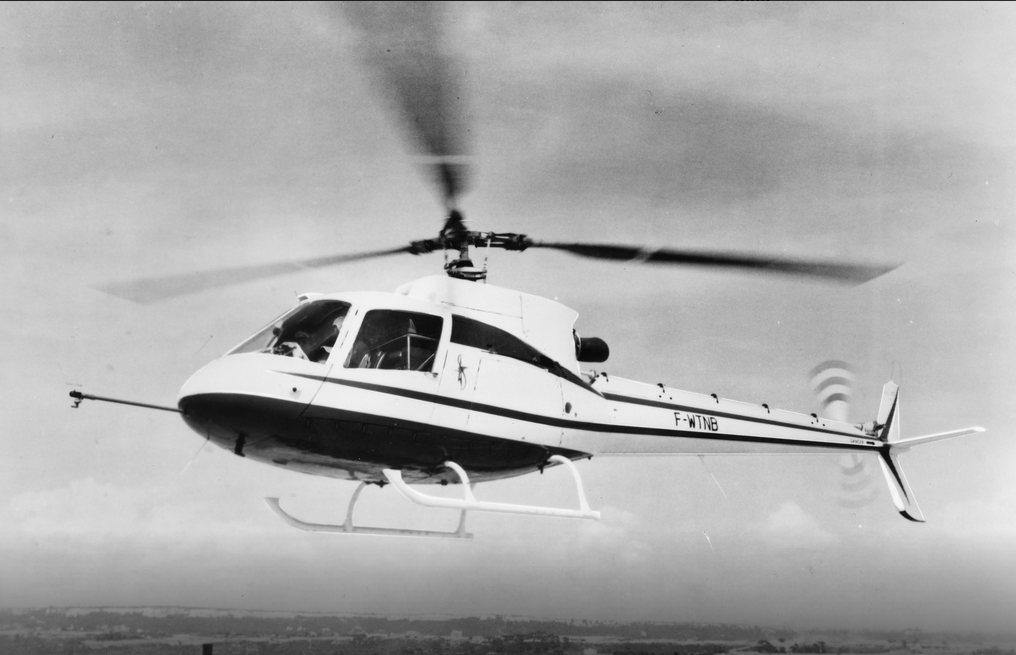
© 2019, Bryan R. Swopes
